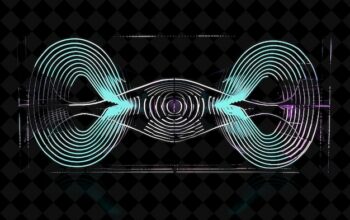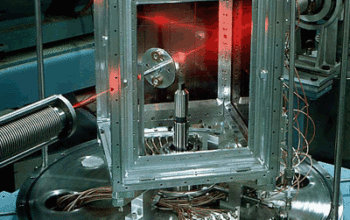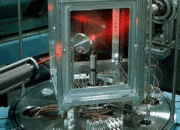The relationship between general relativity and quantum mechanics has long been characterized by its elusive nature. Quantum gravity, heralded as the holy grail of theoretical physics, seeks to reconcile these two pillars of modern physics. Among the empirical tools utilized to probe its realms, gamma-ray bursts (GRBs) have emerged as celestial beacons that illuminate the enigmatic interface between the vast cosmos and the minuscule quantum world. Recent investigations utilizing the data from these cosmic events suggest intriguing limits to quantum gravity, refining our understanding of fundamental interactions.
Gamma-ray bursts epitomize the dynamism of the universe. They are transient, cataclysmic phenomena, born from the violent death throes of massive stars or the collision of neutron stars. The energy released during such events rivals the luminosity of entire galaxies, rendering them visible across staggering distances. When observed from Earth, these bursts not only serve as reminders of the universe’s scale but also act as natural laboratories, providing a unique opportunity to test our understanding of physical laws under extreme conditions.
In the context of quantum gravity, GRBs offer a multifaceted opportunity. Researchers have proposed models where quantum effects at cosmological distances could manifest in the form of modified dispersion relations. Such modifications imply that the speed of light may not be a constant across all scales, particularly at high-energy regimes prevalent in the vicinity of GRBs. This suggestion resonates with certain theories postulating that spacetime itself may exhibit a granular structure, challenging the conventional view of a smooth continuum.
To delve into the implications of these high-energy gamma emissions, scientists have scrutinized the light curves associated with GRBs. The temporal spread of these bursts, influenced by varying energies, provides insight into potential deviations from established physical laws. Specifically, the differing arrival times of photons—some originating in the same explosion but at divergent energies—could signify the presence of an energy-dependent speed of light. Such a phenomenon would suggest fundamental modifications to Einstein’s theory of special relativity, stimulating rigorous exploration of Lorentz invariance.
Indeed, the ramifications of an energy-dependent speed of light are profound. It invokes the tantalizing prospect of a transitory fabric of spacetime that is not uniform across all quantum states. Should GRB observations substantiate such deviations, they would necessitate a comprehensive reevaluation of established physics, ushering in a new paradigm of understanding. This reevaluation might involve a synthesis of classical gravity with quantum principles, a formidable task that has eluded physicists for decades.
Recent analyses of specific GRB events, particularly GRB 090510, have yielded precision measurements that constrain quantum gravity parameters. Researchers utilized the variability in the arrival times of photons across the electromagnetic spectrum to place stringent limits on potential violations of Lorentz invariance. The findings suggest that if spacetime possesses a discrete structure, it would manifest ripples that impact high-energy interactions subtly, yet measurably. This delicate interplay between energy and spacetime is akin to ripples on a pond, distributed away from a stone’s throw. Each photon’s journey mixed with the fabric of articulated spacetime encapsulates the fundamental struggle between gravity and quantum mechanics.
The juxtaposition of the celestial realm and quantum fluctuations invokes an almost poetic image—the tension between the vast expanse of space and the intimate phenomena inherent in the quantum world. The astronomical observations deriving from GRBs stand not only as a testament to human curiosity but also as a reminder of the intricate constructs governing the universe. Each burst of gamma radiation we witness serves as a cosmic pulse that reverberates with questions of significance. As scientists extend the boundaries of our understanding, the frontier of quantum gravity remains ever beckoning.
Despite the remarkable progress elucidating constraints on quantum gravity, significant hurdles loom ahead. The mathematical framework interfacing these theoretical realms still lacks cohesiveness, and as new data emerges from astrophysical observations and experiments, it may complicate established theories rather than resolve them. Robust theoretical models, addressing the intricacies of loop quantum gravity or string theories, may emerge victorious in the long-standing contest for supremacy in the realm of fundamental physics.
There is an inherent beauty in the uncertainties surrounding quantum gravity, embedded in both the macroscopic dance of cosmic events and the microscopic ballet of subatomic particles. The aspiration to unite these perspectives symbolizes the relentless quest for knowledge that has characterized humanity’s scientific endeavor through the ages. With each discovery, as ephemeral as the flicker of a gamma-ray burst, we inch closer to unveiling the exquisite complexities that govern the universe.
In conclusion, the investigation of gamma-ray bursts facilitates an invaluable avenue for exploring the frontiers of quantum gravity. Through the prism of these violent and awe-inspiring cosmic phenomena, physicists can formulate ever-more precise bounds on the limitations of our current understanding. Such inquiries elucidate the interplay between energy and spacetime, inviting us to ponder the fundamental constructs defining our universe. As we navigate this multidimensional battleground where gravitation meets quantum theory, every observation resonates as a clarion call for further exploration, innovation, and resolution.








